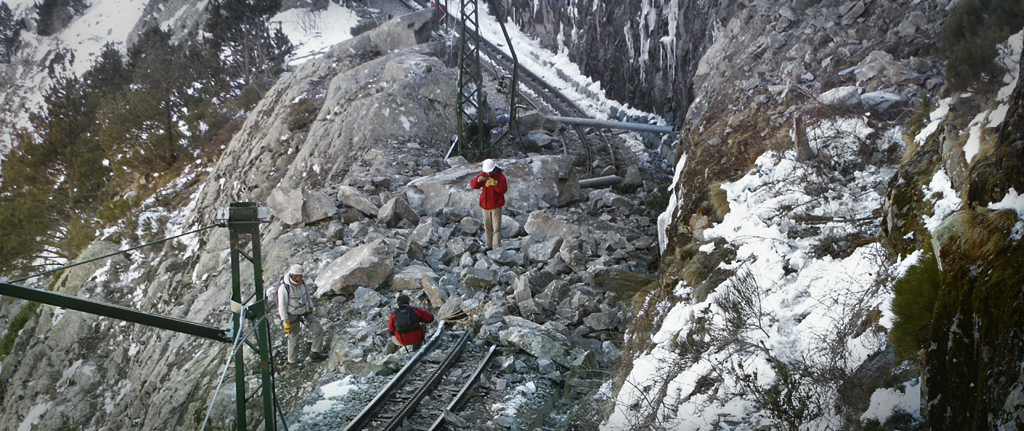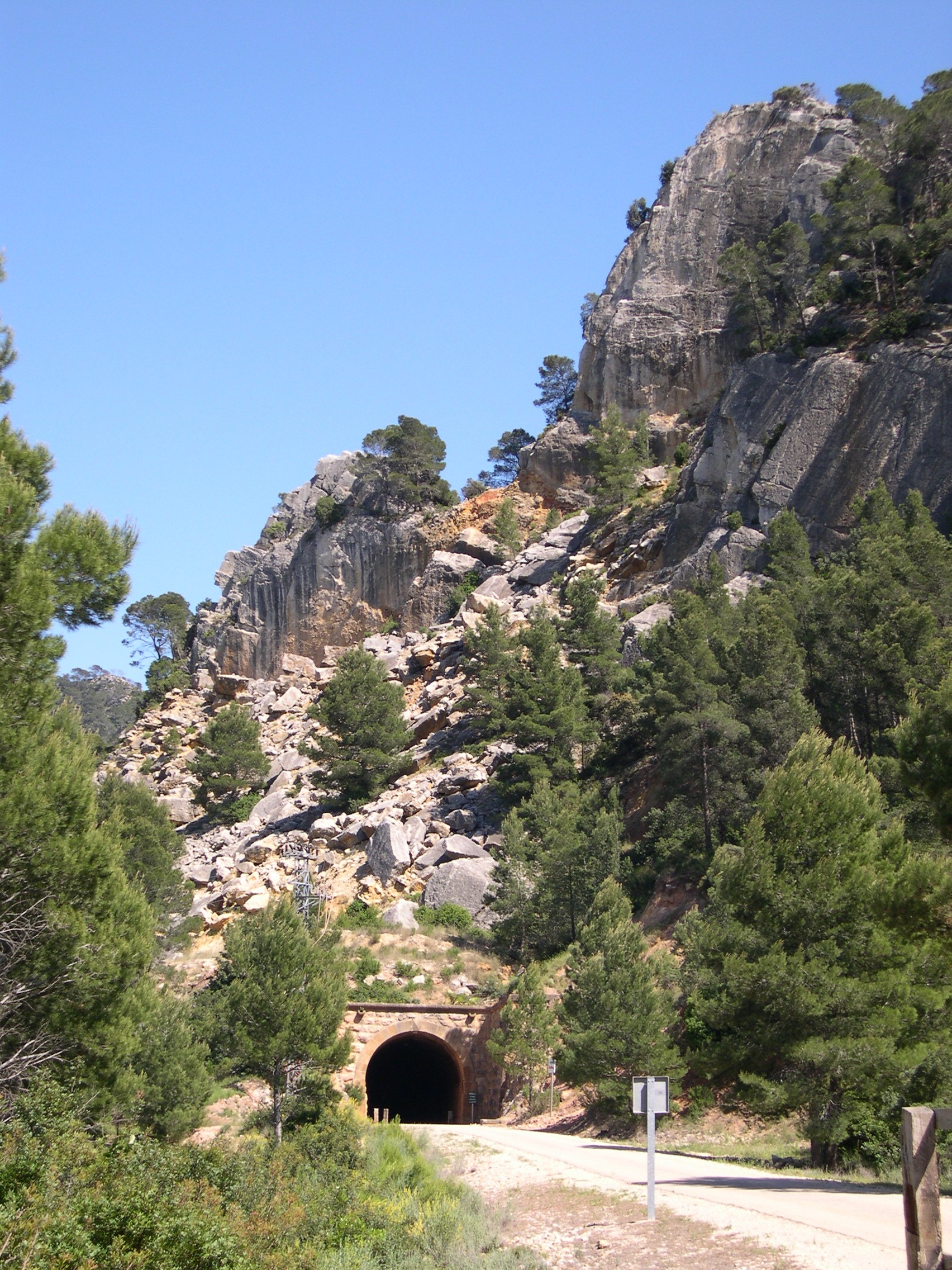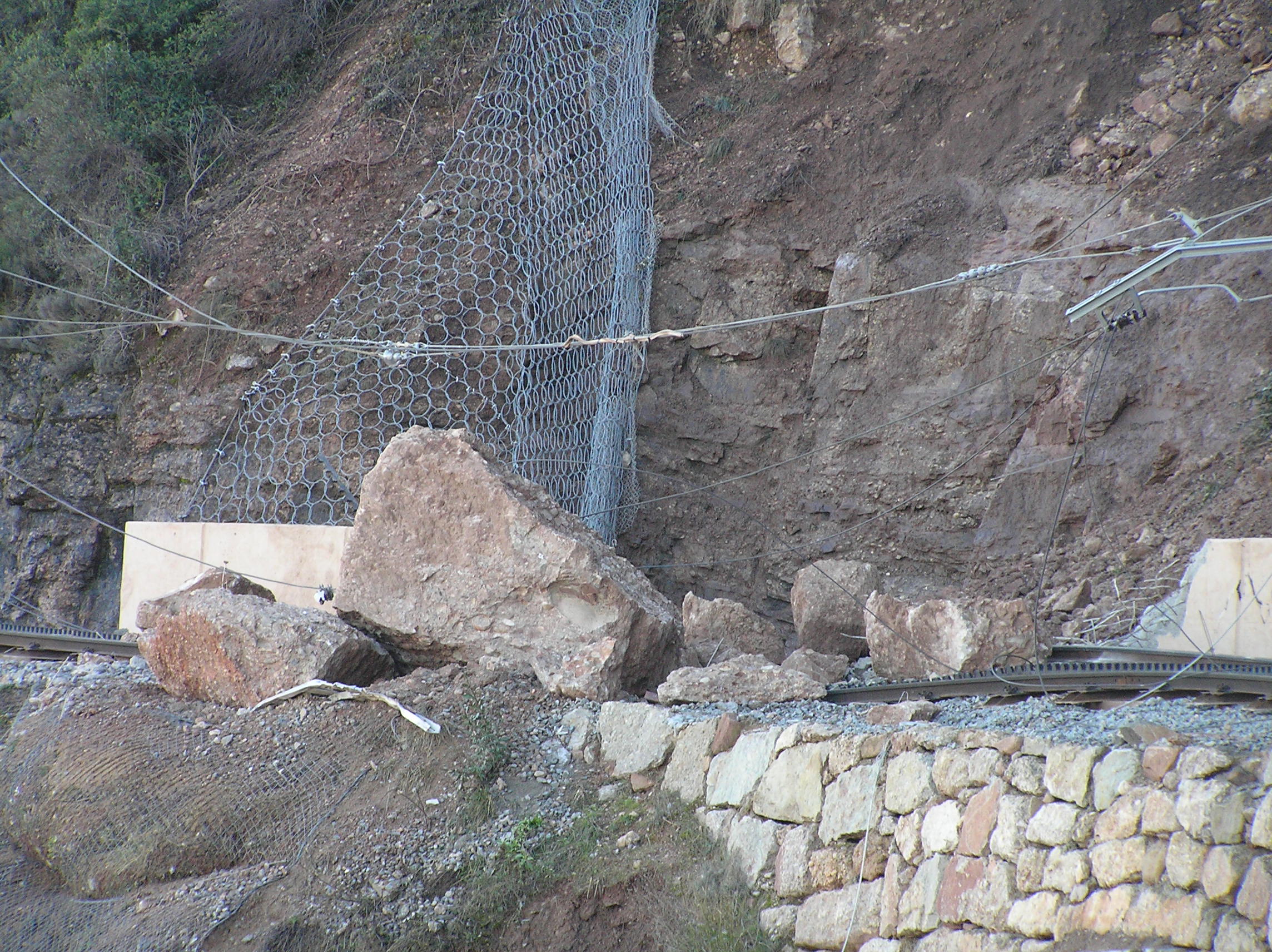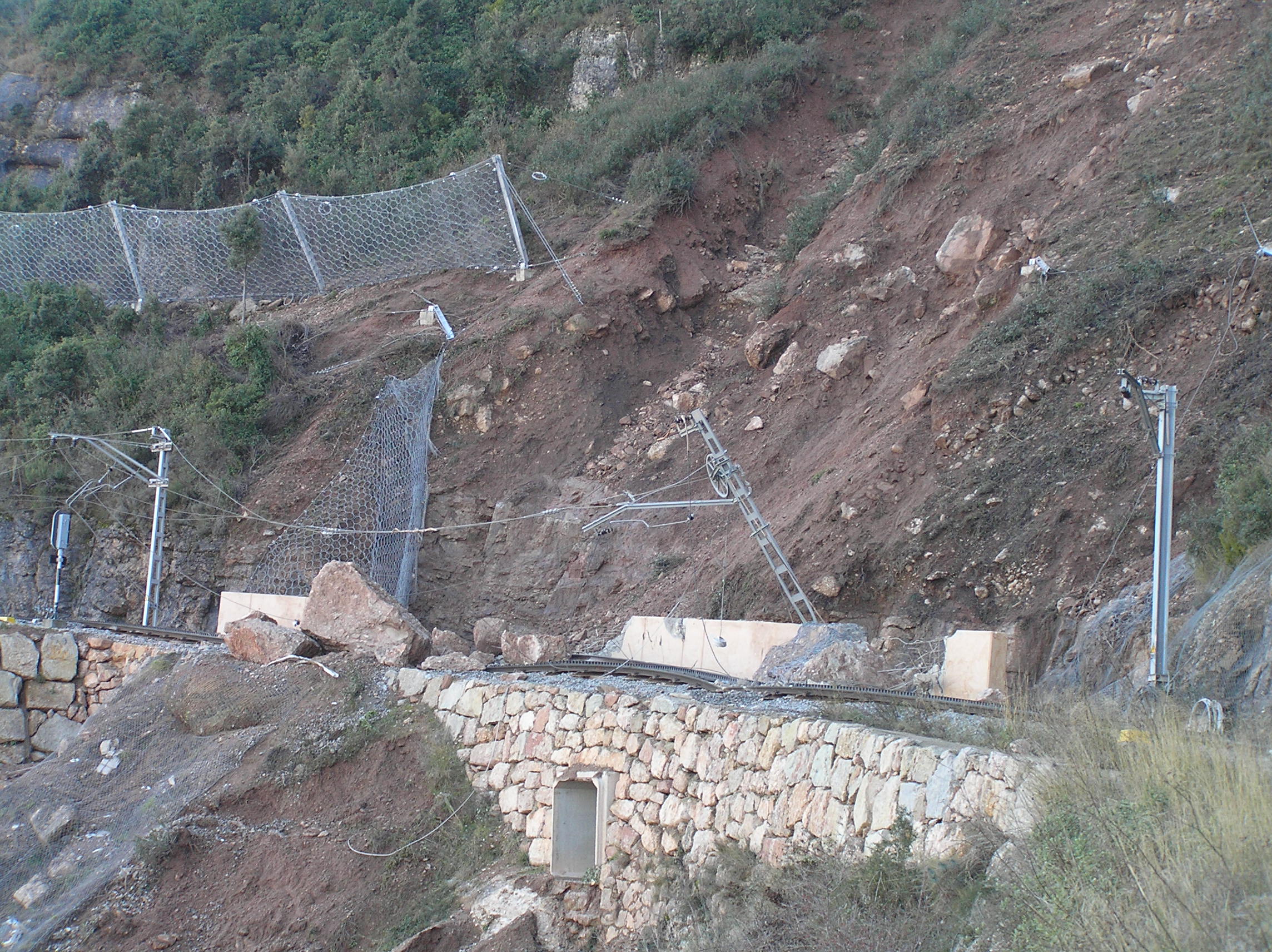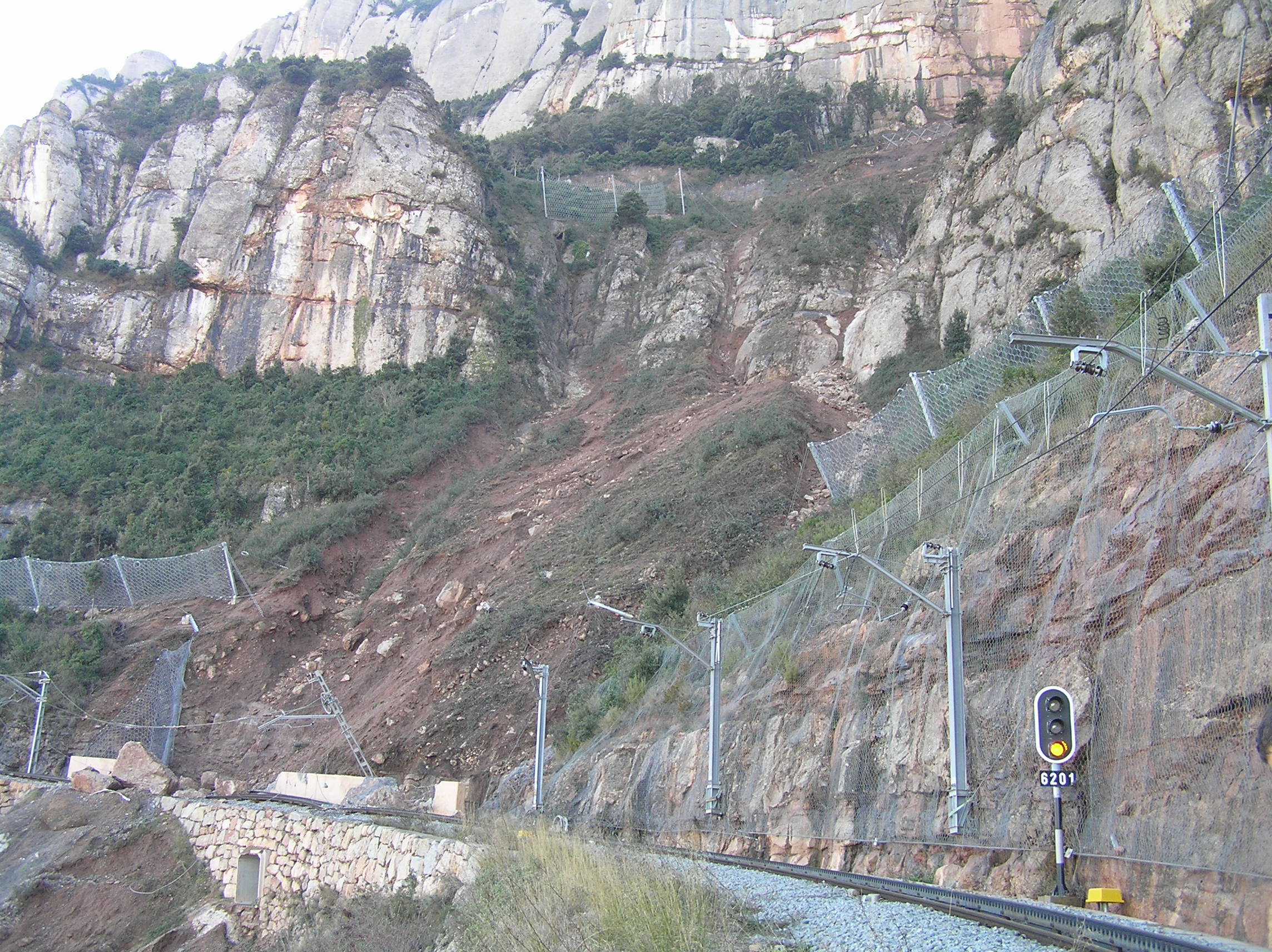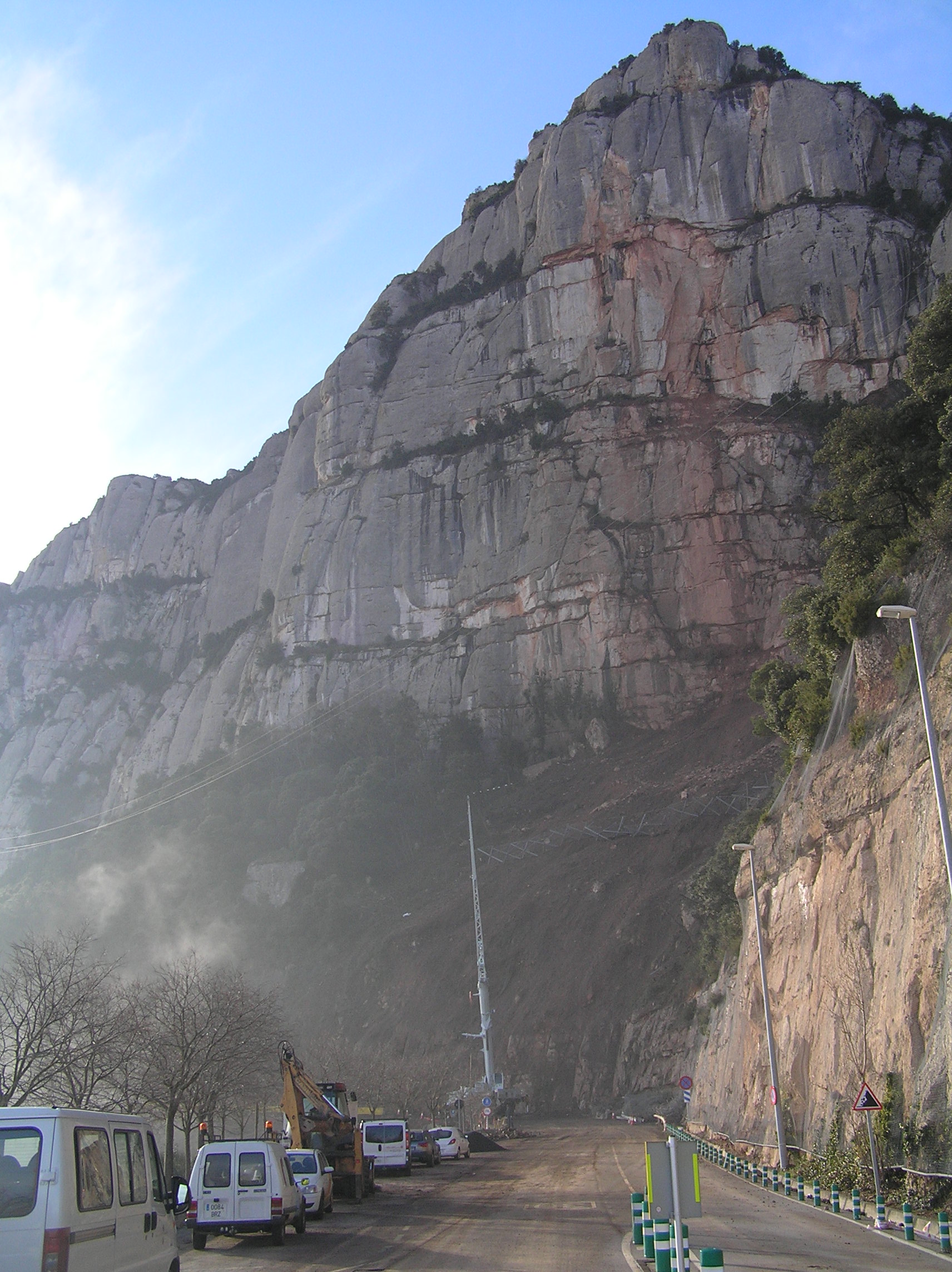Rock falls take place from steep rocky slopes, producing accumulation of rock fragments, highly variable in size, at their foot.
Our objectives are to
- improve the methodologies based on Machine Learning for the automatic detection of rockfalls in a variety of lithologies to analyse their effect on magnitude-frequency relationships. To compare new rockfall datasets with databases from other international institutions to expand knowledge on the instability processes involved.
- improve the monitoring of rockfalls through aerial and sub-daily terrestrial photogrammetry, LiDAR, seismic signals and GNSS-RTK to correlate with the evolution of triggering factors like precipitation, thermal oscillations, vibrations, etc.
- develop procedures for the automatic identification of rockfalls from seismic signals based on STA/LTA methods, to obtain robust results on quasi-real time, as the basis of early warning systems.
Study sites include Puigcercós and Castellfollit de la Roca (Pyrenees), Montserrat (Ebro Basin), and Alhambra (Betic Cordillera).

